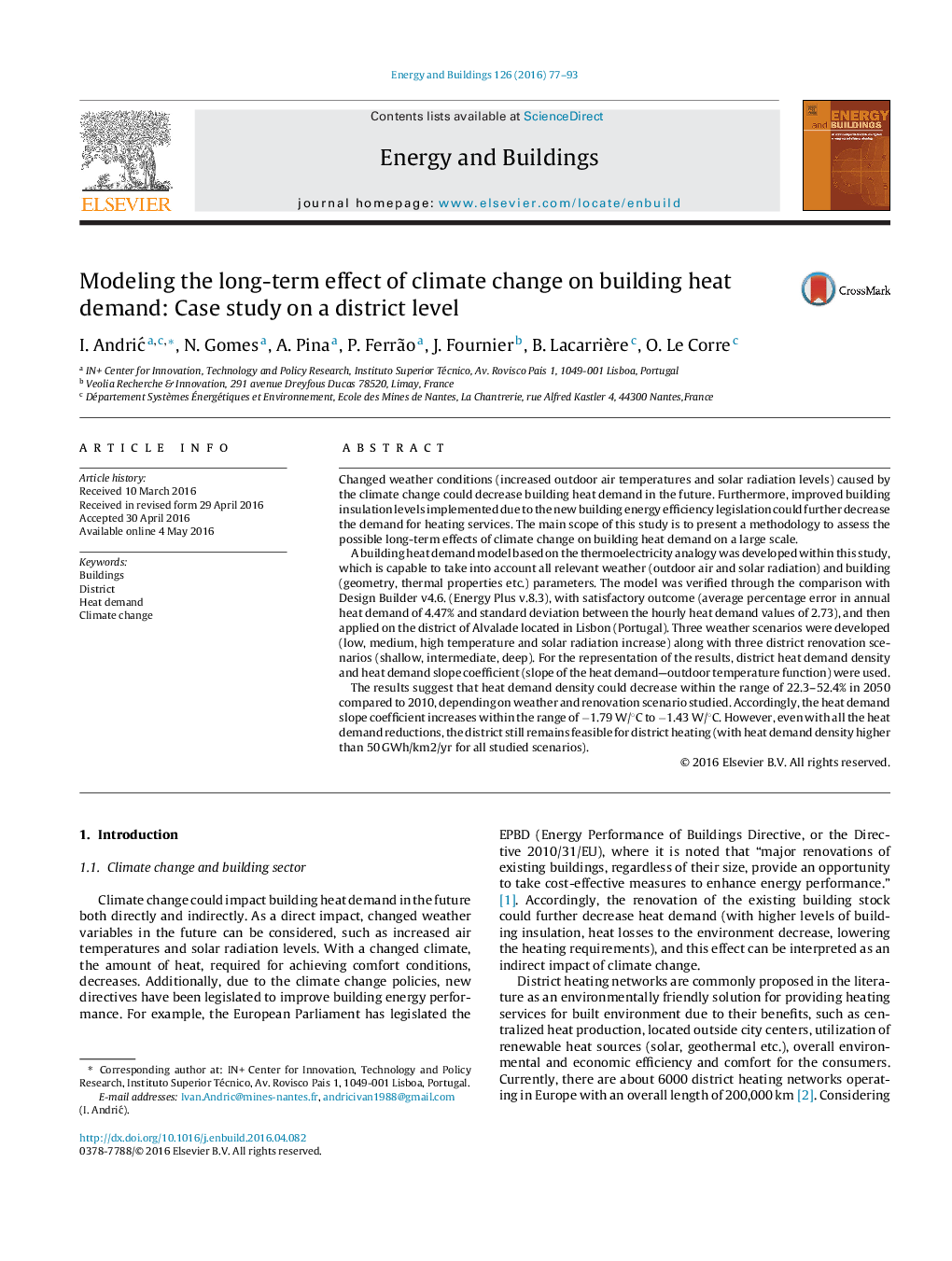| کد مقاله | کد نشریه | سال انتشار | مقاله انگلیسی | نسخه تمام متن |
|---|---|---|---|---|
| 261917 | 504006 | 2016 | 17 صفحه PDF | دانلود رایگان |
• Proposed methodology seems suitable for application on a large scale.
• Heat demand model developed has a satisfactory precision.
• Heat demand density could decrease for 22.3–52.4% (year 2050).
• Heat demand slope coeff. increases for −1.79 W/°C to −1.43 W/°C (year 2050).
• The district still remains feasible for district heating (year 2050).
Changed weather conditions (increased outdoor air temperatures and solar radiation levels) caused by the climate change could decrease building heat demand in the future. Furthermore, improved building insulation levels implemented due to the new building energy efficiency legislation could further decrease the demand for heating services. The main scope of this study is to present a methodology to assess the possible long-term effects of climate change on building heat demand on a large scale.A building heat demand model based on the thermoelectricity analogy was developed within this study, which is capable to take into account all relevant weather (outdoor air and solar radiation) and building (geometry, thermal properties etc.) parameters. The model was verified through the comparison with Design Builder v4.6. (Energy Plus v.8.3), with satisfactory outcome (average percentage error in annual heat demand of 4.47% and standard deviation between the hourly heat demand values of 2.73), and then applied on the district of Alvalade located in Lisbon (Portugal). Three weather scenarios were developed (low, medium, high temperature and solar radiation increase) along with three district renovation scenarios (shallow, intermediate, deep). For the representation of the results, district heat demand density and heat demand slope coefficient (slope of the heat demand—outdoor temperature function) were used.The results suggest that heat demand density could decrease within the range of 22.3–52.4% in 2050 compared to 2010, depending on weather and renovation scenario studied. Accordingly, the heat demand slope coefficient increases within the range of −1.79 W/°C to −1.43 W/°C. However, even with all the heat demand reductions, the district still remains feasible for district heating (with heat demand density higher than 50 GWh/km2/yr for all studied scenarios).
Journal: Energy and Buildings - Volume 126, 15 August 2016, Pages 77–93
